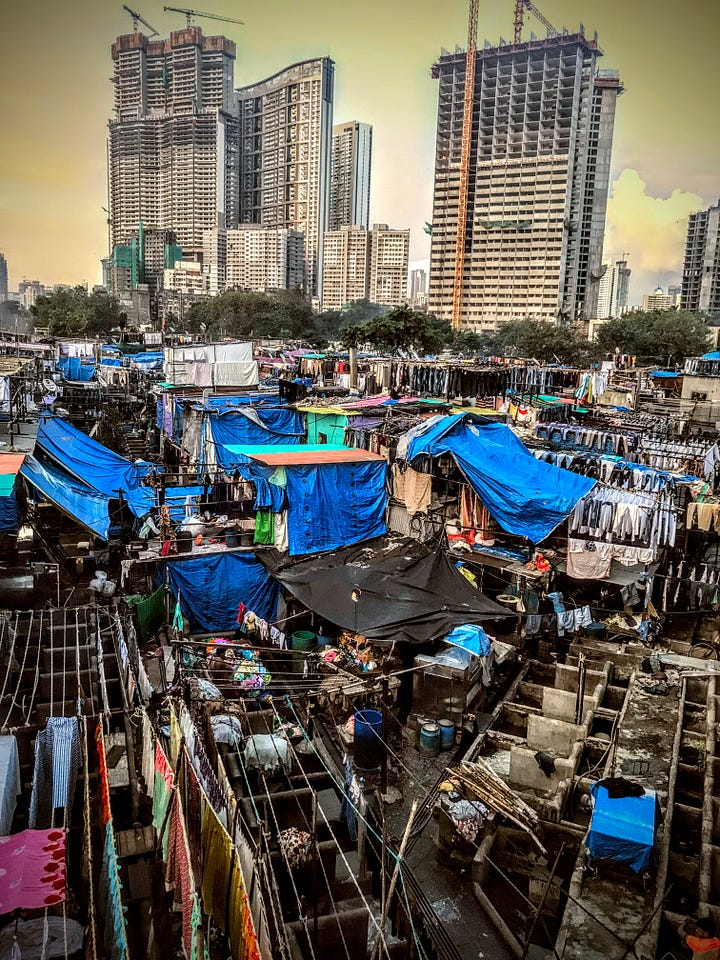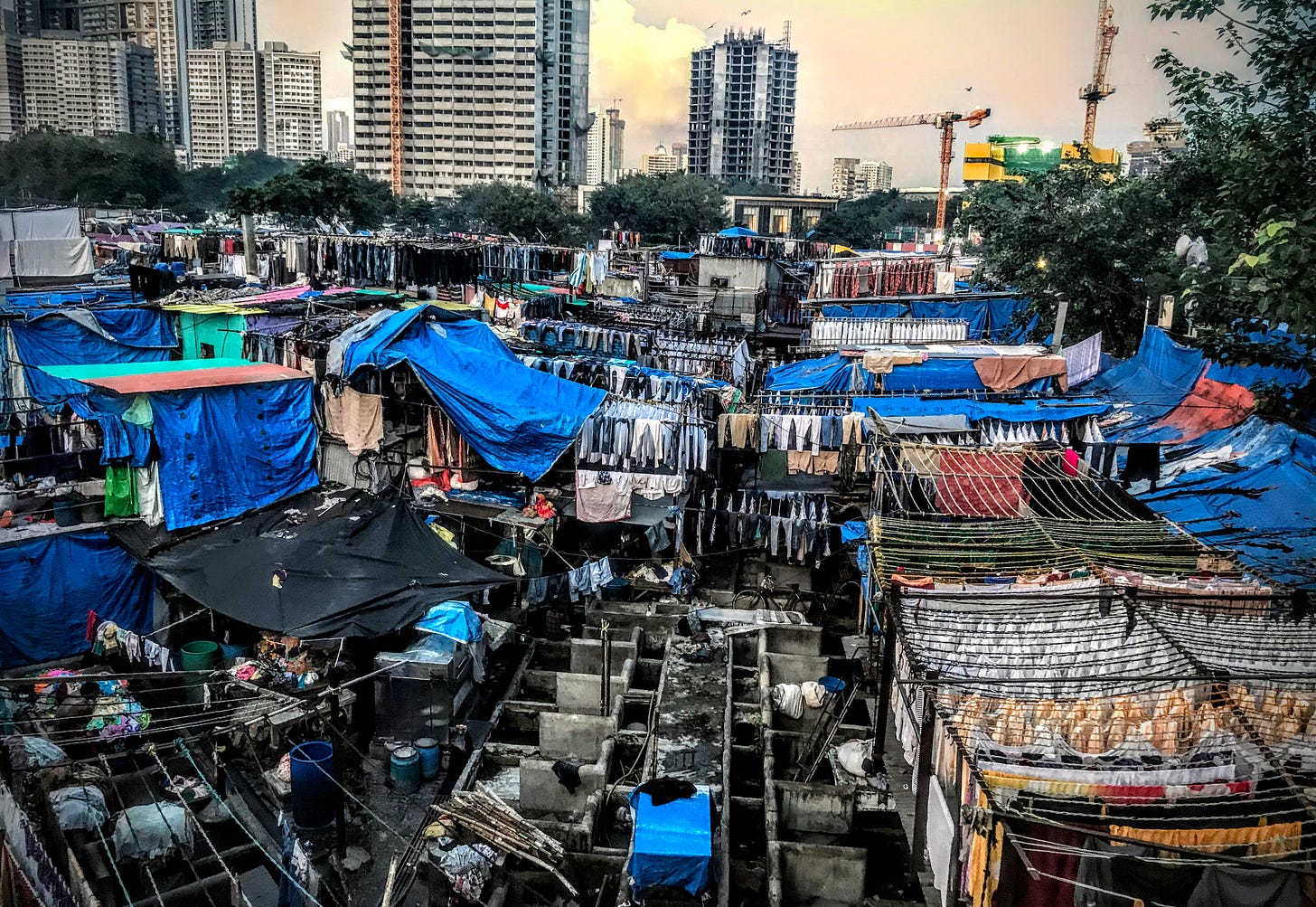Mumbai's Dhobi Ghat: A City-Sized Laundromat Where India's Caste System Meets Modern Capitalism
A sprawling, open-air laundromat stands as a stark reminder of the caste system's staying power amidst Mumbai's relentless economic rise.
📍 Mumbai, India
Tucked between modern skyscrapers and the ceaseless hum of highways in Mumbai lies Dhobi Ghat (Hindi for "washerman's landing"), the world's biggest open-air laundry. Dhobi Ghat is among the most jarring juxtapositions that define India's megacity—stark wealth brushing shoulders with poverty, and economic ascent coexisting with intergenerational hardship. Here, between 8,000 and 10,000 washermen, known as "dhobis," labor tirelessly, hand-washing mountains of laundry for Mumbai's hotels, hospitals, restaurants, and residents. Dhobi Ghat's frenetic activity has even earned it a Guinness World Record for the "most people hand-washing clothes simultaneously in a single location" on the planet.


At Dhobi Ghat, the laundry process unfolds with a meticulousness that belies its chaotic surrounds. Clothes are sorted with practiced eyes, colors and fabrics dictating their place in the cycle. Dhobis plunge into their work, scrubbing garments in vast concrete basins that have a restless soundtrack of flowing water and slapping wet cloth. Clotheslines become vibrant tapestries as garments are hung with precision; staggering volumes of over 100,000 kilograms of laundry—the weight of roughly 20 adult elephants—are washed daily. Yet, for all the labor, returns are meager; a shirt, meticulously cleaned and dried, might fetch a mere 10 rupees, the equivalent of a few American cents.
The scene echoes a centuries-old global tradition of outdoor laundry. Yet, while modernity brought indoor plumbing and whirring machines to many corners of the world, South Asia's dhobi tradition endures—a tenacious blend of practicality, economic hardship, and the lingering legacy of caste.
Dhobi Ghat, a symbol of socioeconomic immobility, stands in stark contrast to the economic ascent embodied by its bordering skyscrapers. Here, change and stasis coexist in an uneasy embrace. Every dhobi belongs to a hereditary caste linked to their occupation, a system where life paths are often predetermined at birth. Even within marriage traditions, the caste system persists. A dhobi woman's dowry might include an iron, subtly reinforcing the division of labor within the Dhobi Ghat community: women traditionally iron, while men handle washing and delivery.
Centuries of lineage have shaped the dhobis into a distinct caste, bound by the practice of endogamy, marriage within the group itself. The Mumbai Dhobi Ghat is a world unto itself, with temples, schools, and even a hospital. Founded in 1990 by a dhobi collective, its efficiency is born of shared resources and sheer scale. The location was strategic, near a water source and with the open air space needed for the sun to do its work.
Dhobis belong to India's scheduled castes, groups officially recognized as among the country’s most socioeconomically disadvantaged. The 2001 census suggests dhobis make up roughly 6 percent of India's scheduled caste population. Yet, the lines of tradition are blurring. Not every member of the dhobi caste now works as a washerman. In the Indian state of Andhra Pradesh, for instance, dhobis pursue professions as diverse as farming, medicine, and law. Literacy rates among dhobis in Bihar and Assam even exceed state and national averages for scheduled castes.
A visit to Mumbai's Dhobi Ghat made it brutally clear: the caste system isn't a dusty relic, but a very present force shaping modern India's economy. While capitalism may have chipped away at some of the caste system's rituals, it's also exacerbated economic inequality. Here, the washermen seem as bound to their work as they are to their socioeconomic status.




